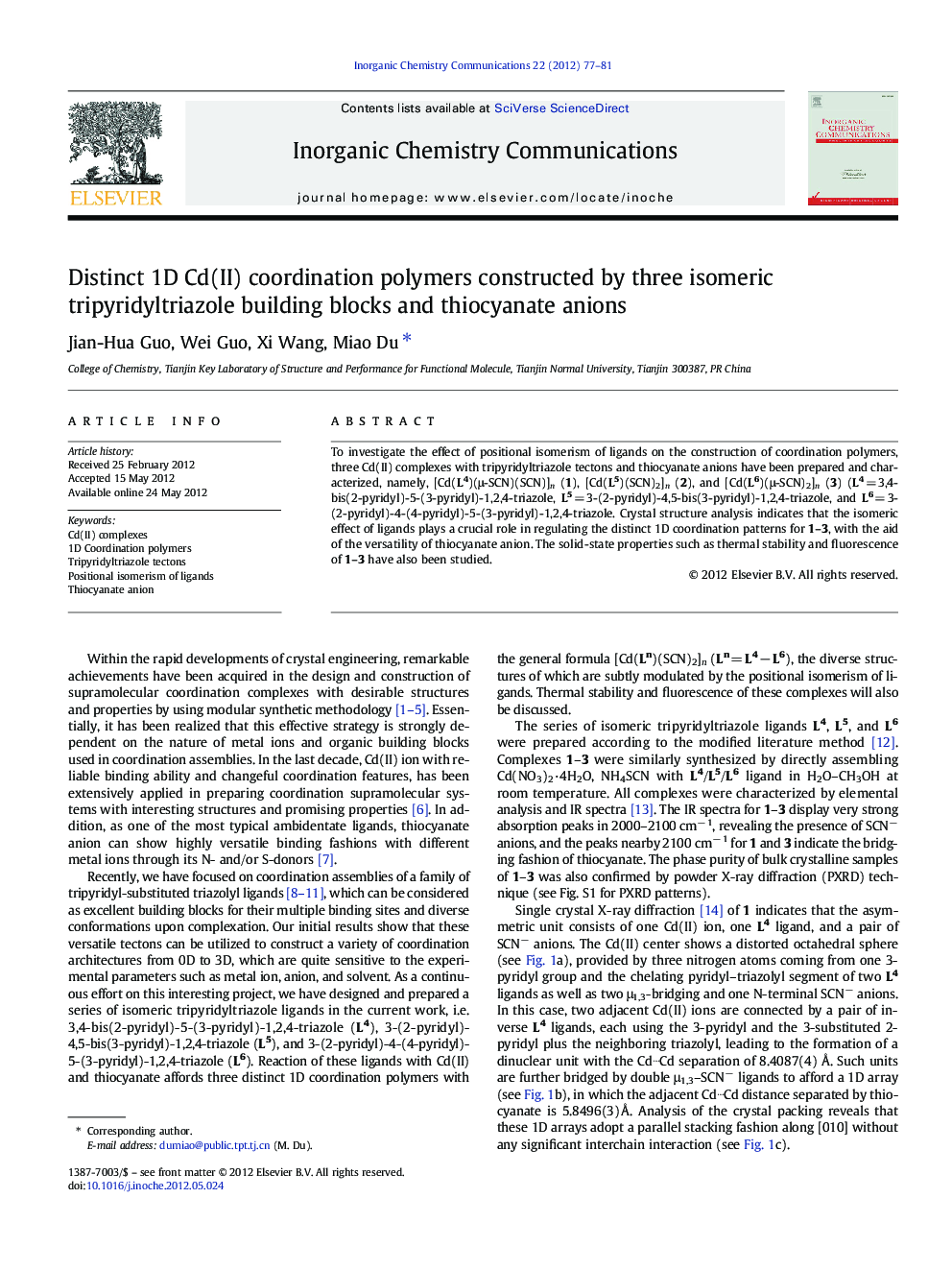| کد مقاله | کد نشریه | سال انتشار | مقاله انگلیسی | نسخه تمام متن |
|---|---|---|---|---|
| 1303949 | 1498968 | 2012 | 5 صفحه PDF | دانلود رایگان |

To investigate the effect of positional isomerism of ligands on the construction of coordination polymers, three Cd(II) complexes with tripyridyltriazole tectons and thiocyanate anions have been prepared and characterized, namely, [Cd(L4)(μ-SCN)(SCN)]n (1), [Cd(L5)(SCN)2]n (2), and [Cd(L6)(μ-SCN)2]n (3) (L4 = 3,4-bis(2-pyridyl)-5-(3-pyridyl)-1,2,4-triazole, L5 = 3-(2-pyridyl)-4,5-bis(3-pyridyl)-1,2,4-triazole, and L6 = 3-(2-pyridyl)-4-(4-pyridyl)-5-(3-pyridyl)-1,2,4-triazole. Crystal structure analysis indicates that the isomeric effect of ligands plays a crucial role in regulating the distinct 1D coordination patterns for 1–3, with the aid of the versatility of thiocyanate anion. The solid-state properties such as thermal stability and fluorescence of 1–3 have also been studied.
This work presents the syntheses, crystal structures, and thermal and fluorescent properties of three distinct 1D Cd(II) coordination polymers based on a series of isomeric tripyridyltriazole tectons and thiocyanate anions.Figure optionsDownload as PowerPoint slideHighlights
► Three Cd(II) thiocyanate coordination polymers have been synthesized and characterized.
► The isomeric tripyridyltriazole ligands therein show different binding modes.
► The distinct 1D coordination assemblies are determined by positional isomerism of the ligands.
Journal: Inorganic Chemistry Communications - Volume 22, August 2012, Pages 77–81